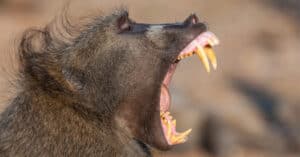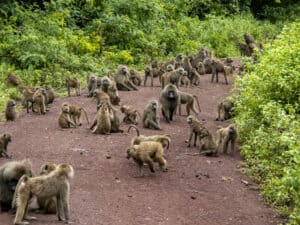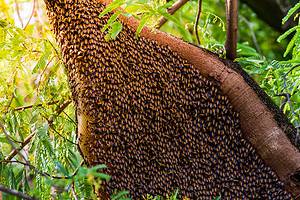Continue reading for our analysis...
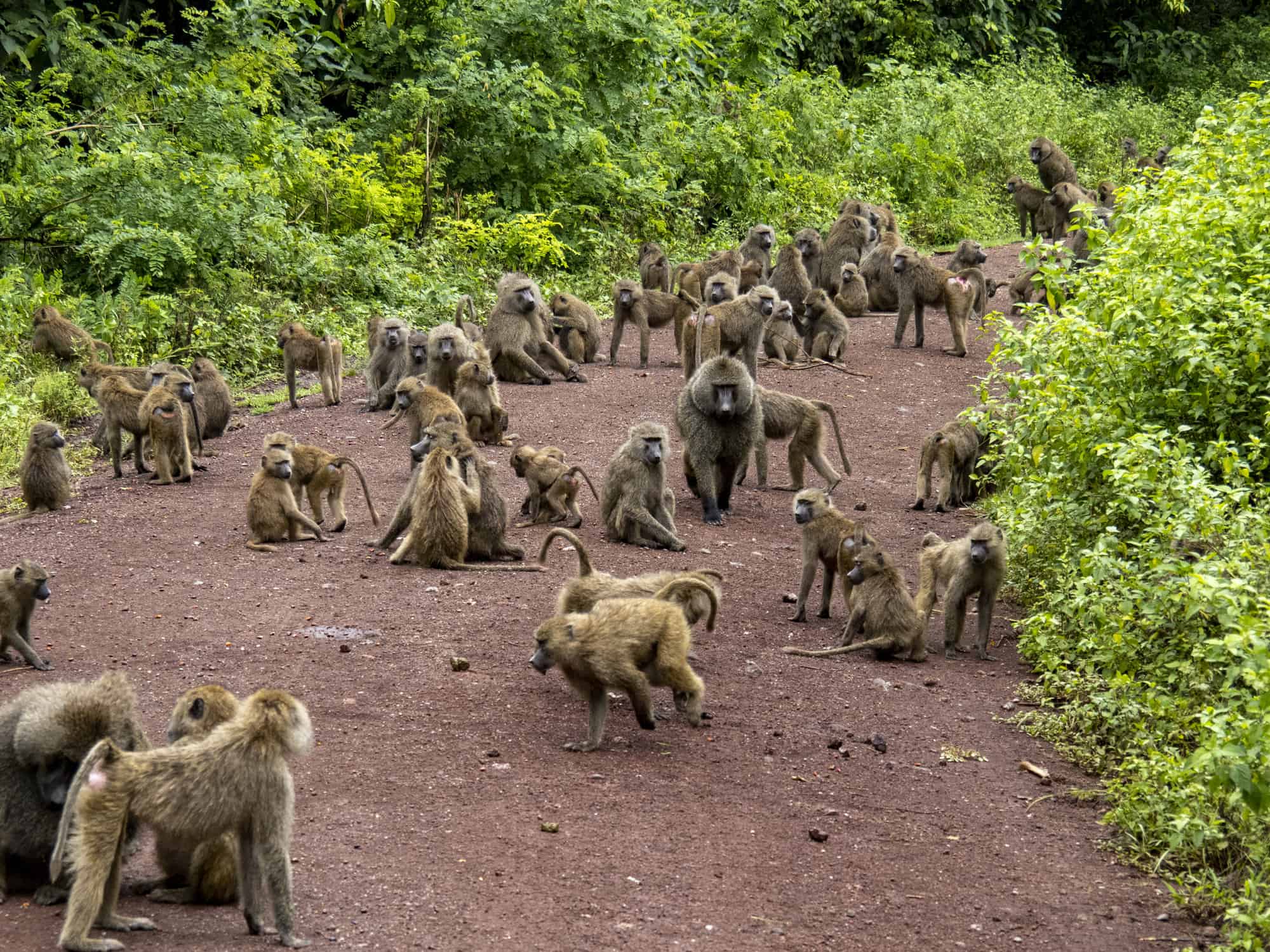
Even though you’ve probably never seen one, lions spend a significant amount of their life lying in branches far above the earth. Of all the African wild creatures, the lion is presumably the one that is most revered and dreaded.
This is due to the fact that it is a formidable carnivore that is capable of feeding on the majority of the savannah fauna. Lions do a lot more than just relax in tree tops. Although these big cats are famous for how they hunt on the ground, they’ll scale a tree if prey is near.
A video online features footage from the Ashnil Samburu Camp in Africa. The safari tour guide Martin Weru filmed a troop of baboons running from a hungry pride of lions. As the camera keeps rolling, we see a lioness acting curious.
She seems to be intrigued by the happenings in a nearby tree. As the clip continues, we see a baby baboon dangling from one branch, reaching for another. It’s then a camouflaged lioness reaches down and grabs the young baboon.
Baboons vs. Lions

Surprisingly, not all lions know how to climb trees.
©Evelyn D. Harrison/Shutterstock.com
As you can likely guess, the baboon quickly became the lion’s lunch. Leopards, lions, and hyenas are baboons’ primary predators. Similarly, adult baboons have been known to murder lion and leopard kittens when they discover them roaming alone.
They will take the lion cub nourishment, and by achieving this, they will have fewer competitors in the future. A lion poses a hazard to any other living thing that dwells nearby anywhere it is in its natural environment.
Baboons are naturally a target for these apex predators because they inhabit open savannahs. Any animal can be a lion’s dinner because they consume all kinds of flesh. Baboons are frequently consumed by lions as part of their diet.
Baboons typically reside in trees and even sleep in branches, making them difficult for lions to capture. Therefore, a lion might choose to catch larger prey on land instead. But in broad savannahs, where we frequently see baboons, when they are on the ground without a tree to hide behind, a lion may pursue them and kill them.
How Can Baboons Protect Themselves From Lions?
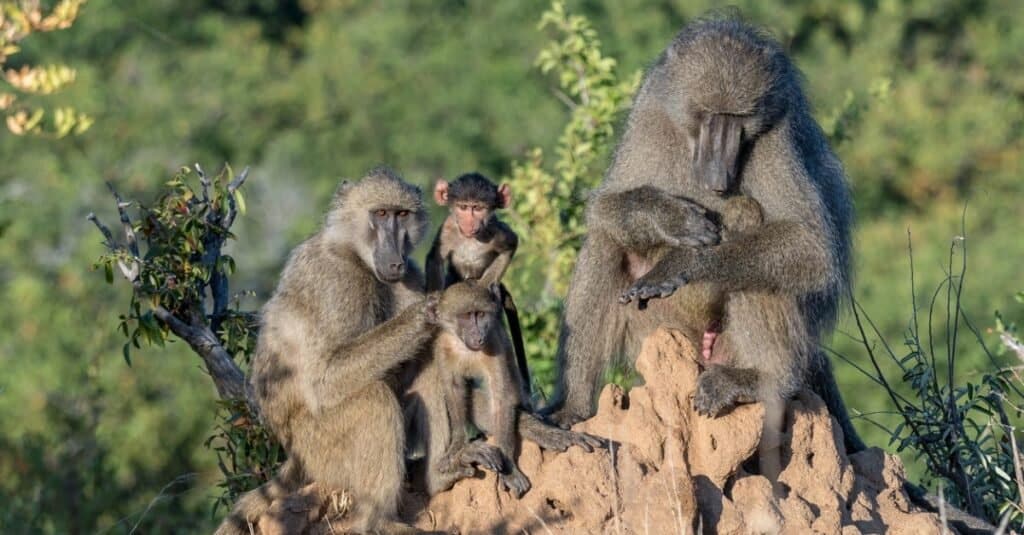
The main weapon baboons possess is their exceptionally strong fangs. They also live in large troops as a defense mechanism.
©Grobler du Preez/Shutterstock.com
Baboons defend themselves with their strong physical characteristics and big fangs. Baboons have exceptionally strong fangs that assist them in protecting themselves from attackers or social competitors in addition to helping them catch and consume prey.
Baboons are social animals that frequently live in huge packs. These animals may attack in large groups as well as individually, making the size of the troop a defense mechanism. This is one method of defense against predators, albeit it isn’t always effective, in addition to hiding in higher shelters like trees to avoid danger.
How Large Do Baboons Get?
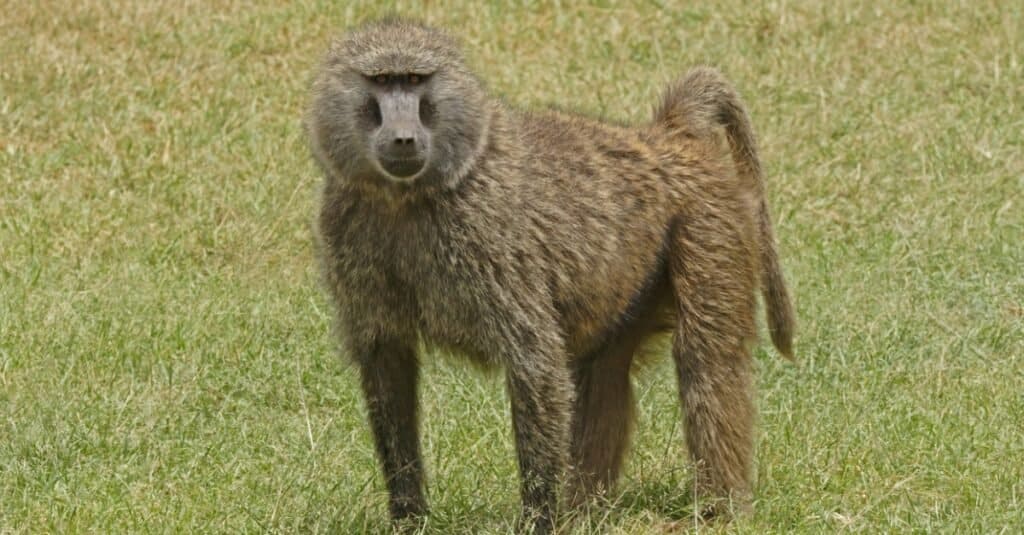
Baboons sport an average height of 20-45 inches and weigh from 30-100 pounds.
©iStock.com/neil bowman
The size of a baboon varies by species, with the Chacma baboon being the largest while the Guinea baboon is the smallest species. Baboons range in height from 20 to 45 inches tall, while their arching tails can extend 17 to 28 inches long. Baboons’ weight averages between 30 to 100 pounds.
Due to their size and the fact that they spend most of their time on the ground, Baboons have numerous predators that threaten them, the chief ones being large cats like lions, cheetahs, and leopards. Other animals that can contend with their size to make them a meal include African wild dogs, birds of prey, and large pythons. The smaller and more vulnerable young are particular targets.
Thank you for reading! Have some feedback for us? Contact the AZ Animals editorial team.



